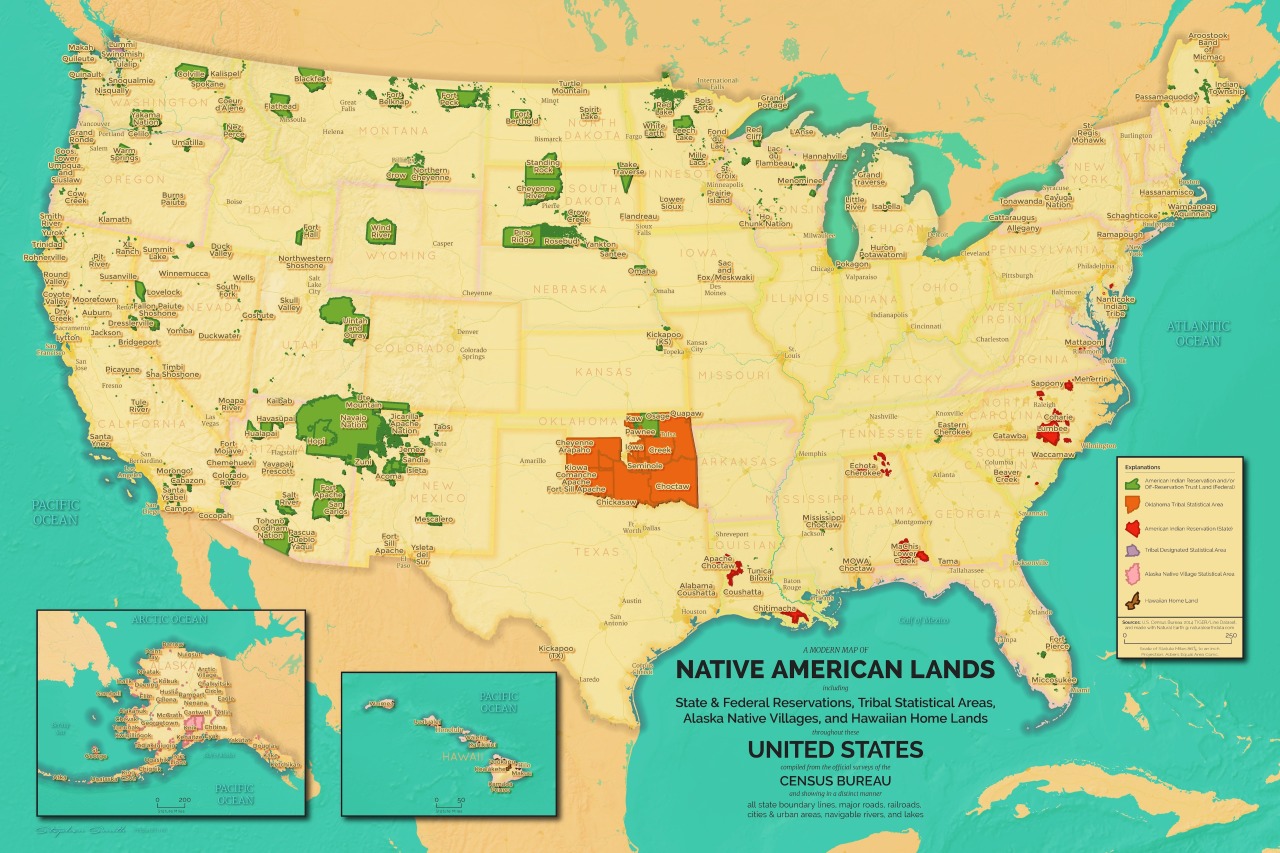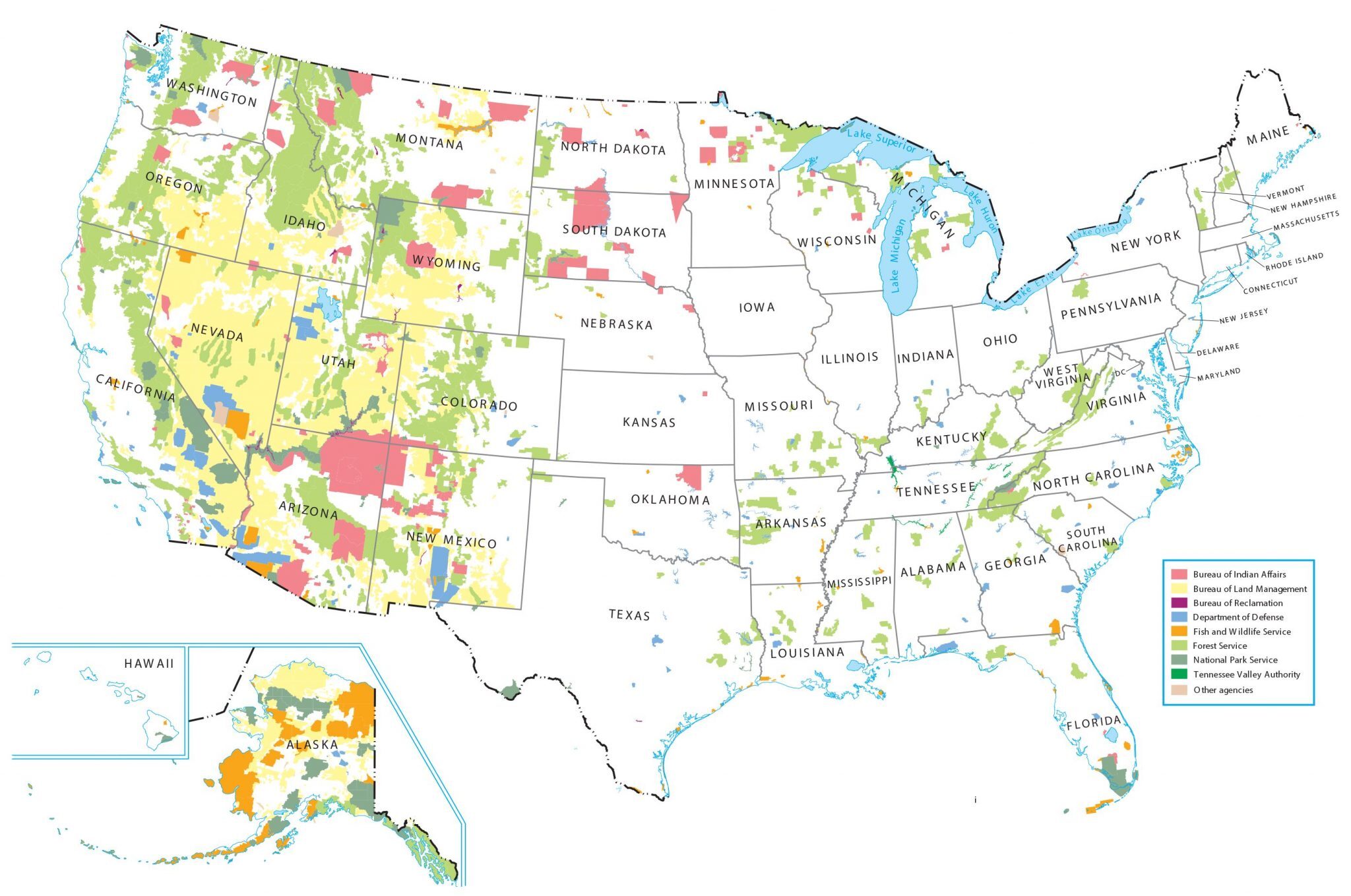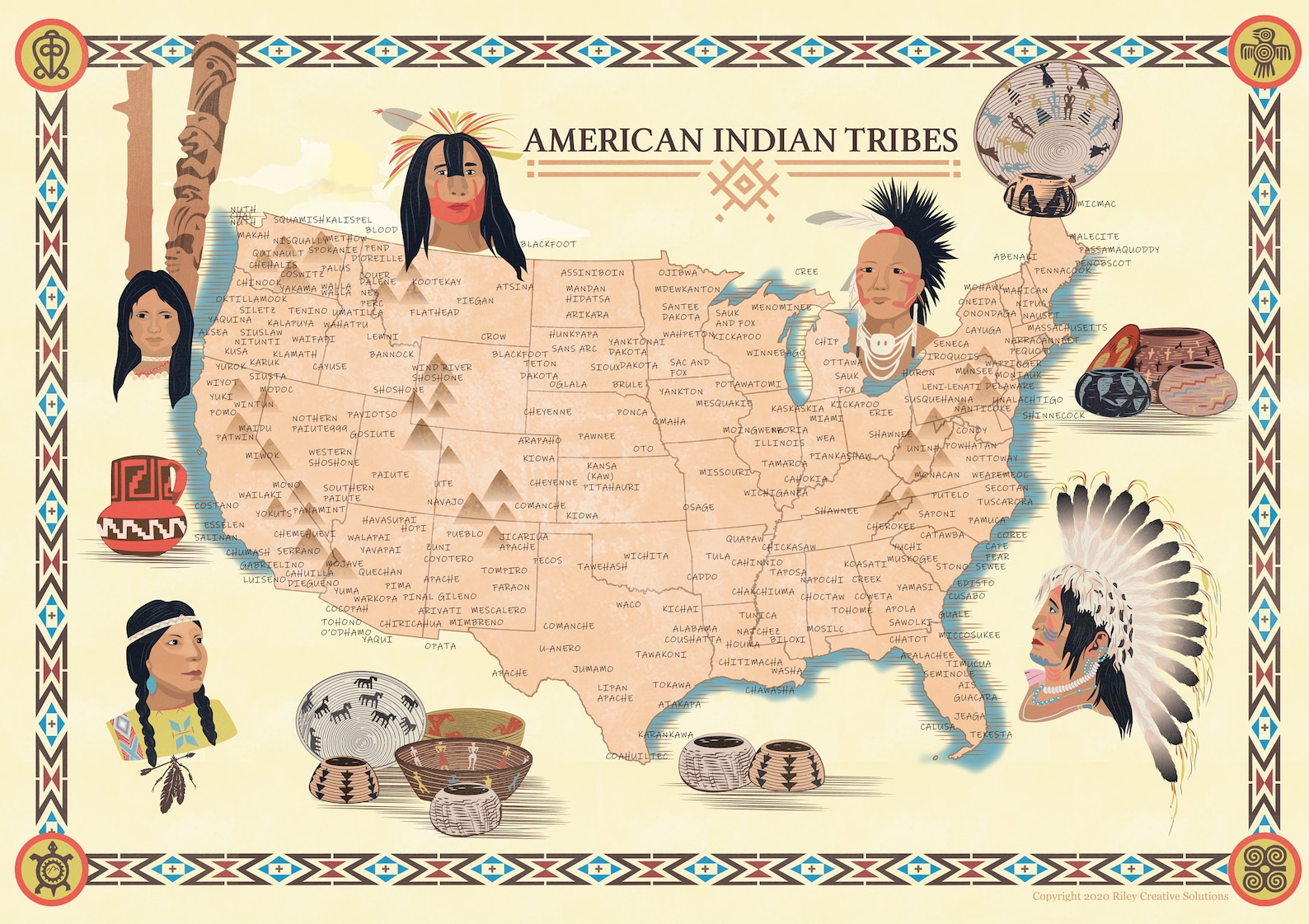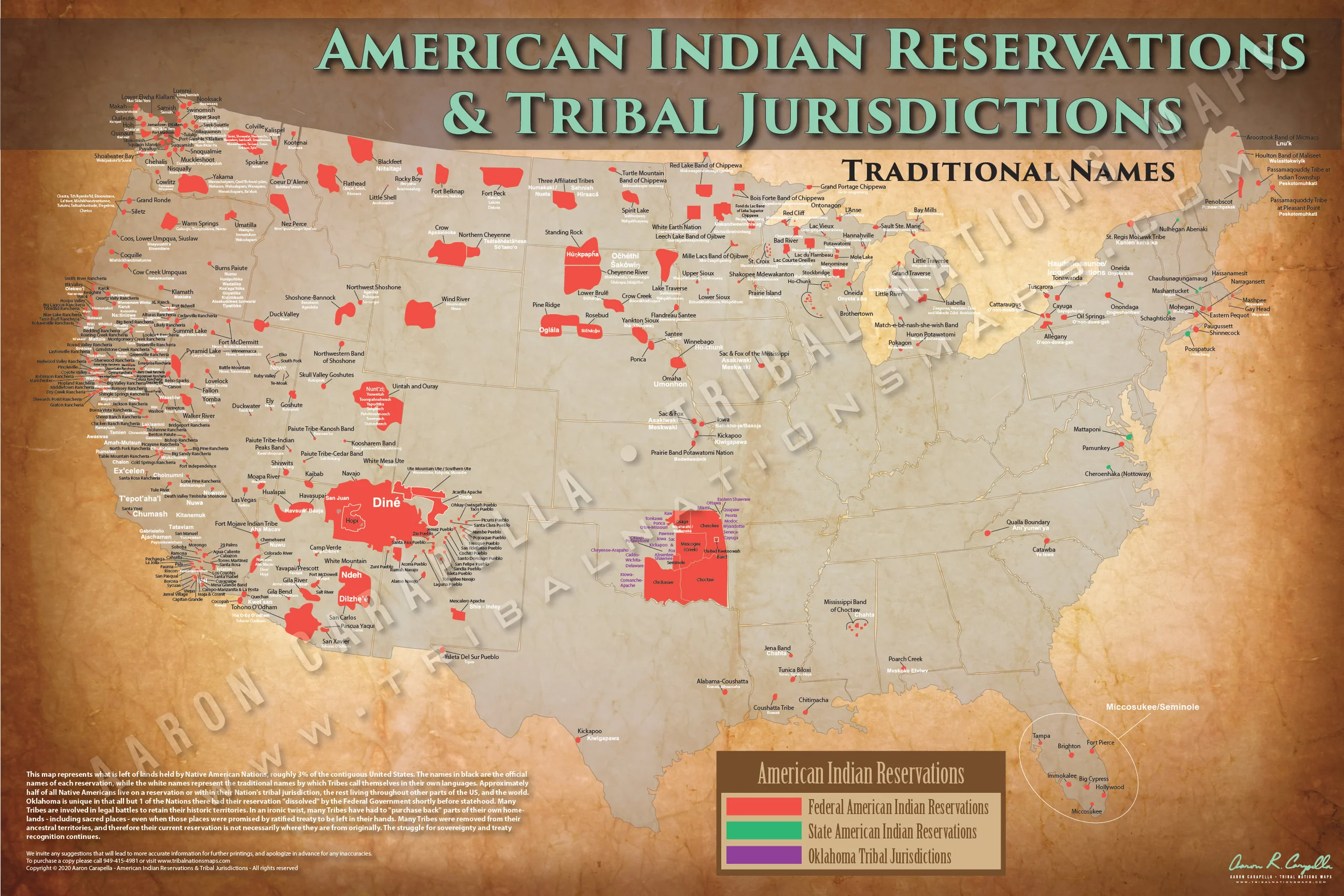Mapping the Previous and Current: Understanding the Complexity of Native American Tribal Lands in america
Associated Articles: Mapping the Previous and Current: Understanding the Complexity of Native American Tribal Lands in america
Introduction
With nice pleasure, we’ll discover the intriguing subject associated to Mapping the Previous and Current: Understanding the Complexity of Native American Tribal Lands in america. Let’s weave fascinating info and supply contemporary views to the readers.
Desk of Content material
Mapping the Previous and Current: Understanding the Complexity of Native American Tribal Lands in america

America, a nation constructed on a basis of westward enlargement and Manifest Future, holds a posh and sometimes painful historical past with its Indigenous populations. Understanding this historical past requires acknowledging the pre-colonial presence of quite a few sovereign nations and the dramatic impression of colonization on their territories. A map depicting the areas of Native American tribes in america, whereas seemingly simple, reveals a narrative of displacement, resilience, and ongoing struggles for self-determination. Creating such a map, nonetheless, is a problem demanding cautious consideration of historic accuracy, up to date realities, and the inherent limitations of cartographic illustration.
The Challenges of Illustration:
Any map making an attempt to indicate the areas of Native American tribes faces a number of vital hurdles. First, the idea of "tribal lands" itself has developed drastically over time. Previous to European contact, Indigenous nations occupied huge territories outlined not by inflexible borders however by fluid relationships with the land, neighboring tribes, and useful resource availability. These territories have been dynamic, shifting based mostly on seasonal migrations, alliances, and conflicts. Mapping these pre-colonial territories requires in depth archeological, anthropological, and historic analysis, and even then, precision is troublesome to realize.
Second, the arrival of Europeans basically altered the panorama of Indigenous occupation. By treaties (usually coerced), wars, and compelled removals, Native American nations skilled huge displacement from their ancestral homelands. The Path of Tears, the elimination of Cherokee and different Southeastern tribes to Oklahoma, stands as a brutal instance of this compelled migration and the ensuing fragmentation of tribal territories. Mapping this course of requires acknowledging not solely the unique territories but in addition the next compelled relocations and the institution of reservations, usually far faraway from ancestral lands.
Third, the present authorized and political panorama additional complicates the image. The time period "reservation" itself is a misnomer, usually implying a passive acceptance of confinement. In actuality, reservations are legally outlined areas with various levels of tribal sovereignty and self-governance. These reservations usually are not uniformly sized or geographically contiguous, and their boundaries are topic to authorized disputes and ongoing negotiations with the federal authorities. Moreover, many tribes preserve cultural and historic connections to lands exterior of their formally acknowledged reservations.
Historic Maps vs. Up to date Actuality:
Historic maps depicting Native American territories usually replicate the biased views of the colonizers. These maps regularly underrepresent the dimensions and extent of Indigenous territories, usually portraying them as smaller and fewer vital than they really have been. They might additionally inaccurately depict tribal boundaries, reflecting the colonial energy’s want to manage and divide Indigenous nations.
Up to date maps, whereas aiming for higher accuracy, nonetheless face challenges. The sheer variety of federally acknowledged tribes (at the moment over 570) makes complete mapping a posh enterprise. Furthermore, the continued means of tribal recognition and the altering nature of tribal governance require fixed updates and revisions to any such map. Lastly, the delicate nature of the knowledge concerned necessitates cautious consideration of the moral implications of mapping tribal lands, making certain that the illustration respects the sovereignty and self-determination of Indigenous nations.
Past Easy Location: The Significance of Context:
A complete map of Native American tribes ought to transcend merely plotting areas on a map. It ought to incorporate historic context, highlighting the numerous occasions that formed the present distribution of tribal lands. This would come with:
- Pre-colonial territories: Displaying the approximate extent of Indigenous territories earlier than European contact, acknowledging the fluidity and dynamism of those areas.
- Treaty boundaries: Mapping the boundaries established via treaties, highlighting the usually unequal and coercive nature of those agreements.
- Pressured removals: Illustrating the routes and locations of compelled removals, such because the Path of Tears, to reveal the impression of displacement.
- Reservation boundaries: Displaying the present boundaries of federally acknowledged reservations, acknowledging their various sizes and levels of self-governance.
- Tribal affiliations: Figuring out the particular tribes related to every territory, acknowledging the variety and complexity of Indigenous cultures.
- Land claims and disputes: Highlighting areas the place ongoing land claims and disputes exist between tribes and the federal authorities.
Using Expertise for Enhanced Understanding:
Interactive on-line maps supply a strong software for presenting this advanced info. These maps can incorporate layers of data, permitting customers to discover the historic evolution of tribal territories, examine pre-colonial and up to date boundaries, and be taught in regards to the distinctive histories and cultures of particular person tribes. Hyperlinks to related historic paperwork, tribal web sites, and academic assets can present additional context and improve the person expertise.
Conclusion:
Making a map of Native American tribes in america is a posh and nuanced endeavor. It requires cautious consideration of historic accuracy, up to date realities, and the moral implications of representing Indigenous territories. Such a map shouldn’t be considered as a static illustration however moderately as a dynamic software for understanding the continued story of Indigenous resilience, self-determination, and the enduring wrestle for justice and recognition. By incorporating historic context, acknowledging the constraints of cartographic illustration, and using know-how to reinforce accessibility and engagement, we are able to create a map that serves as a priceless useful resource for schooling, advocacy, and reconciliation. Finally, a really complete map should be knowledgeable by and respectful of the views and voices of the Indigenous nations themselves. It ought to be a collaborative effort, acknowledging the complexities of their histories and celebrating their enduring cultures and sovereignties.








Closure
Thus, we hope this text has supplied priceless insights into Mapping the Previous and Current: Understanding the Complexity of Native American Tribal Lands in america. We respect your consideration to our article. See you in our subsequent article!